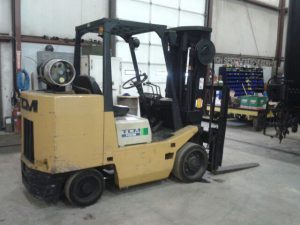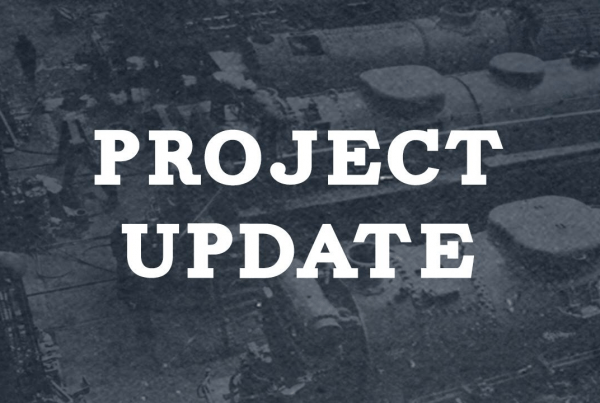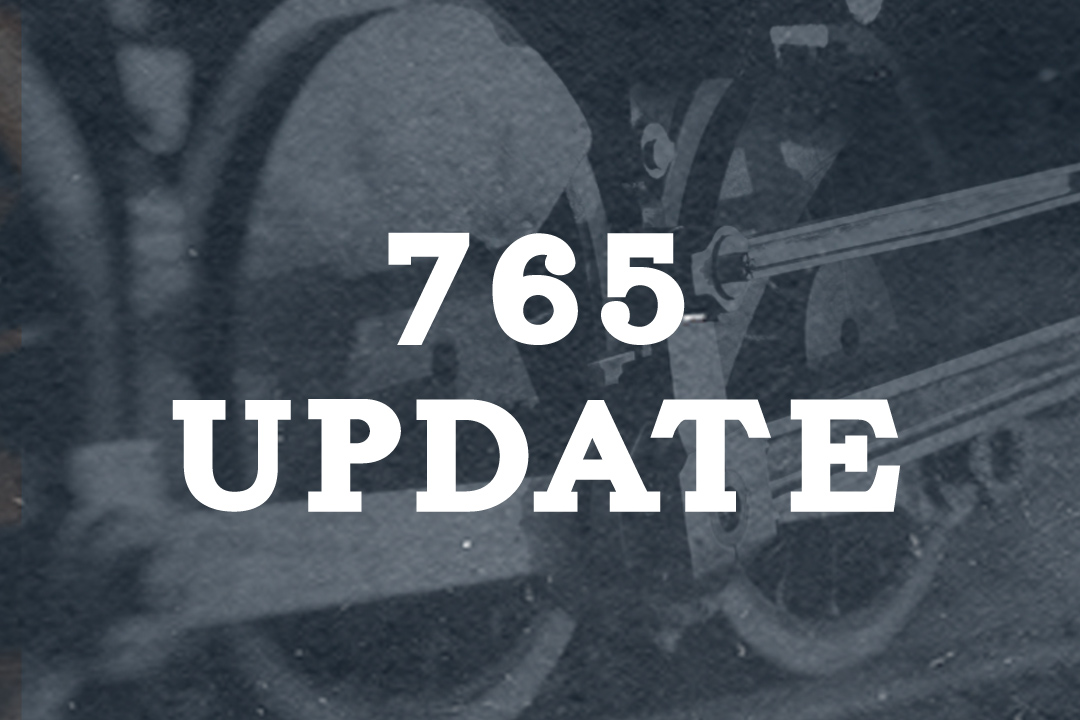Submitted by Tom Nitza.
This was a busy and productive weekend for work on the Plymouth locomotive. We received delivery of a 55 gallon drum of oil and another containing anti freeze. Also, Dave picked up the oil and fuel filters we need from Cummins. There is one gasket that didn’t come in but hopefully we’ll get that this week.
The replacement brush holder clamp was machined and it fit perfectly. The brush holders were installed and the anti freeze was changed in the #2 engine. During the week I had Precision Fabrication make a replacement cover for the one missing on the generator. That was painted and installed. I’ll order a latch from McMaster Carr to complete that project. We also did some work on a few of the engine room doors to make opening and closing them easier.
At that point it was time to fire up the #2 engine. With the locomotive outside we ran the engine. The only problem noted was a coolant leak which disappeared once the engine warmed up. Along the top of the engine there’s a water manifold which delivers water to the heads. One of the connections was leaking. Of course you can’t access the bolts directly without removing other parts. Since the leak was minor and disappears when the engine reaches operating temperature we decided that repairing that could wait until another day.
The engine ran well and the main generator developed power. We were able to run the locomotive using just the #2 engine. The throttle needed adjustment because it did not always come back to idle. We noticed on the other engine that getting the throttle properly adjusted is a little tricky since it’s a long rod mechanically connecting the throttle in the cab with the lever on the fuel pump. At some point, when the weather is warmer, we’ll attempt to synchronize both engines as best we can. That’s not something we can do inside the building since the engines have to be running.
Also, since Joe Knapke was there with his meter, we had him measure how much current the block heaters draw. One heater draws 10.7 amps. So, it won’t be possible to run both block heaters simultaneously off of one outlet. At some point we’ll need to run a dedicated circuit or two capable of handling both block heaters. That’s a project that can wait, especially since Joe and others are in the process of upgrading the building’s electrical system.
Work will continue next Friday and Saturday. Hopefully we’ll get started on changing the oil and filters in both engines. As time permits we can work on other areas of concern. Overall we’ve made good progress on the locomotive. Once we’ve completed work on the #2 engine we’ll disconnect the starter again. The problem is that the #2 traction motor has loose mounting bolts and one is missing. Once we’re able to get the Plymouth over the pit we can take care of that.
The Society now has a “new” forklift. No, it’s not brand new, but it’s in excellent condition, runs well, and will be very useful around the shop. It has a lifting height of 15 feet which is higher than our old forklift and will reach the top of the 765 and the top of our storage racks. It does seem odd to drive since the power steering works, the forks stay at the same height and don’t constantly leak down, it doesn’t leave a trail of oil behind it, and everything on it functions as intended. The only real draw back is that you can’t go “cross country” with it. It works well in the building and outside as long as you stay on well compacted gravel. Because of that the old forklift does still have some usefulness. Photo attached.



